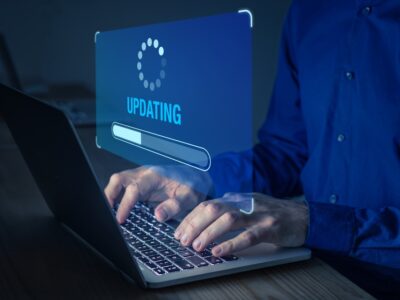Unfortunate as it may sound, misdiagnosis is prevalent in the healthcare industry. According to a 2019 study from BMJ Quality & Safety, over 12 million adults or 1 in 20 people who receive outpatient medical care gets misdiagnosed.
It turns out that other errors in patient records also occur. A new study published in the Journal of the American Medical Association (JAMA) looked at the prevalence of errors in patients’ ambulatory care notes. Of the 29,656 respondents, 4,830 reported seeing a non-typographical mistake in the notes, and 2,043 of those are errors considered serious. These numbers equate to one in five patients finding errors in their medical records, which is alarming since it can lead to patients receiving the wrong care or treatment that they need.

Transparency in Health Information
The study, entitled Frequency and Types of Patient-Reported Errors in Electronic Health Record Ambulatory Care Notes, suggests that patients having access to their medical records is critical in recognizing errors in their medical records.
The researchers, lead by Sigall Bell, MD, an associate professor at Harvard Medical School, said that “patients and families hold unique knowledge about themselves and their care, and their reports hold strong potential for improving individual and organizational safety.”
For the study, the researchers have made 20,000 patients’ electronic health record (EHR) information available between 2010 and 2017. Now, more than 40 million patients can access their clinical records, including their care notes, and this population is where the researchers drew their study participants.
Electronic health records have become a crucial part of the healthcare providers’ operations. However, EHR isn’t the only digital technology facilities are using right now. There are also patient portals, practice management services, and other pieces of software that help medical facilities streamline their processes and provide better care for their patients.
But one of the main benefits of these technologies is providing information transparency for patients. Transparency is essential because it increases engagement among patients. And when patients are more proactive about their health, they can spot errors in their records, which is what happened in the study.
The researchers wrote, “Patients reported that they understand notes and that reading notes helps them remember the next steps (such as tests and referrals). They also reported that note reading enables timely follow-up of results and supports family or friend care partners with information. In addition, sharing notes with patients creates a new mechanism for patients to identify documentation errors.”
Errors in Patients’ Ambulatory Notes
Among the study’s 22,889 respondents who read one or more of their care notes in the past 12 months, 4,830 or 21.1 percent reported finding mistakes in their notes. From these 4,830 patients, 1,563 reported that the mistakes they found were somewhat serious, and 480 said the mistakes were very serious.
From those who reported seeing very serious mistakes, the researchers eliminated responses that did not elaborate enough about the errors patients found, leaving 356 reports. The most common perceived errors these patients reported are:
- Current or past diagnoses (98)
- Inaccurate description of medical history (85)
- Medications or allergies (50)
- Tests, procedures, or results (30)
- Medical examinations documented but not done (24)
- Failed communication, i.e., practitioner documenting something which the patient says did not actually happen during their visit (24)
- Receiving notes on the wrong patient (23)
- Errors in sidedness (12)
The researchers shared that patients expressed appreciation for seeing the notes because it allowed them to report the perceived mistakes in their notes and had them rectified. The others who reported the errors they found, however, weren’t met with positive results. Some of the survey respondents said that after they let their physicians know about the mistakes, they were either ignored or outright dismissed.
The researchers noted that though a majority of their respondents found their care notes to be accurate, communication is essential, especially for those who found errors. They said, “Medicine is a practice that relies heavily on communication, known to have vulnerabilities. Where there are breakdowns or misunderstandings, there is a new opportunity to engage patients and address these issues early on.”
How Better Patient Access Can Help
Patients gaining access to their medical records is a crucial part of creating a better healthcare system, as this study has found. According to the researchers, “Patient-reported mistakes may help prevent medication errors, diagnostic and treatment delay, and duplicated diagnostic tests and procedures. Lack of routine review of notes by patients may be a missed opportunity not only for EHR accuracy but also for organizational learning.”
Currently, millions of people in the U.S. have access to clinicians’ notes, thanks to healthcare providers that adopted an EHR system. According to the Office of the National Coordinator for Health and Information Technology (ONC), 4 in 5 of all non-federal acute care hospitals have an EHR system. By using the significant patient reach of EHR systems, healthcare providers, with the help of their patients, can identify errors in medical records, correct them, and provide better care overall.










Comments